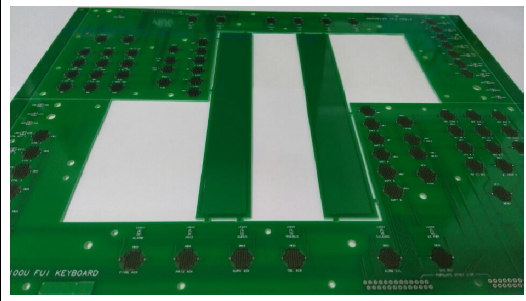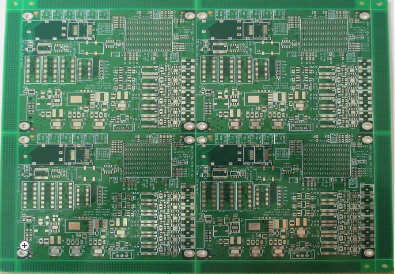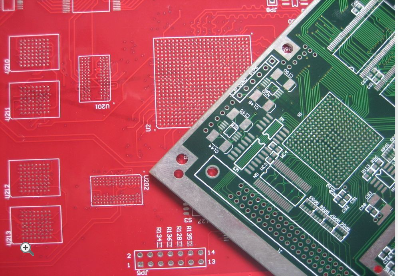-
 Agriculture
Agriculture
-
 Health-Care
Health-Care
-
 Environment
Environment
-
 Construction-Real-Estate
Construction-Real-Estate
-
 Tools-Hardware
Tools-Hardware
-
 Home-Garden
Home-Garden
-
 Furniture
Furniture
-
 Luggage-Bags-Cases
Luggage-Bags-Cases
-
 Medical-devices-Supplies
Medical-devices-Supplies
-
 Gifts-Crafts
Gifts-Crafts
-
 Sports-Entertainment
Sports-Entertainment
-
 Food-Beverage
Food-Beverage
-
 Vehicles-Transportation
Vehicles-Transportation
-
 Power-Transmission
Power-Transmission
-
 Material-Handling
Material-Handling
-
 Renewable-Energy
Renewable-Energy
-
 Safety
Safety
-
 Testing-Instrument-Equipment
Testing-Instrument-Equipment
-
 Construction-Building-Machinery
Construction-Building-Machinery
-
 Pet-Supplies
Pet-Supplies
-
 Personal-Care-Household-Cleaning
Personal-Care-Household-Cleaning
-
 Vehicle-Accessories-Electronics-Tools
Vehicle-Accessories-Electronics-Tools
-
 School-Office-Supplies
School-Office-Supplies
-
 Packaging-Printing
Packaging-Printing
-
 Mother-Kids-Toys
Mother-Kids-Toys
-
 Business-Services
Business-Services
-
 Commercial-Equipment-Machinery
Commercial-Equipment-Machinery
-
 Apparel-Accessories
Apparel-Accessories
-
 Security
Security
-
 Shoes-Accessories
Shoes-Accessories
-
 Vehicle-Parts-Accessories
Vehicle-Parts-Accessories
-
 Jewelry-Eyewear-Watches-Accessories
Jewelry-Eyewear-Watches-Accessories
-
 Lights-Lighting
Lights-Lighting
-
 Fabric-Textile-Raw-Material
Fabric-Textile-Raw-Material
-
 Fabrication-Services
Fabrication-Services
-
 Industrial-Machinery
Industrial-Machinery
-
 Consumer-Electronics
Consumer-Electronics
-
 Electrical-Equipment-Supplies
Electrical-Equipment-Supplies
-
 Electronic-Components-Accessories-Telecommunications
Electronic-Components-Accessories-Telecommunications
-
 Home-Appliances
Home-Appliances
-
 Beauty
Beauty
-
 Chemicals
Chemicals
-
 Rubber-Plastics
Rubber-Plastics
-
 Metals-Alloys
Metals-Alloys
- Masonry Materials
- Curtain Walls & Accessories
- Earthwork Products
- Fireproofing Materials
- Heat Insulation Materials
- Plastic Building Materials
- Building Boards
- Soundproofing Materials
- Timber
- Waterproofing Materials
- Balustrades & Handrails
- Bathroom & Kitchen
- Flooring & Accessories
- Tiles & Accessories
- Door, Window & Accessories
- Fireplaces & Stoves
- Floor Heating Systems & Parts
- Stairs & Stair Parts
- Ceilings
- Elevators & Escalators
- Stone
- Countertops, Vanity Tops & Table Tops
- Mosaics
- Metal Building Materials
- Multifunctional Materials
- Ladders & Scaffoldings
- Mouldings
- Corner Guards
- Decorative Films
- Formwork
- Building & Industrial Glass
- Other Construction & Real Estate
- Wallpapers/Wall panels
- HVAC System & Parts
- Outdoor Facilities
- Prefabricated Buildings
- Festive & Party Supplies
- Bathroom Products
- Household Sundries
- Rain Gear
- Garden Supplies
- Household Cleaning Tools & Accessories
- Lighters & Smoking Accessories
- Home Storage & Organization
- Household Scales
- Smart Home Improvement
- Home Textiles
- Kitchenware
- Drinkware & Accessories
- Dinnerware, Coffee & Wine
- Home Decor
- Golf
- Fitness & Body Building
- Amusement Park Facilities
- Billiards, Board Game,Coin Operated Games
- Musical Instruments
- Outdoor Affordable Luxury Sports
- Camping & Hiking
- Fishing
- Sports Safety&Rehabilitation
- Ball Sports Equipments
- Water Sports
- Winter Sports
- Luxury Travel Equipments
- Sports Shoes, Bags & Accessories
- Cycling
- Other Sports & Entertainment Products
- Artificial Grass&Sports Flooring&Sports Court Equipment
- Scooters
- Food Ingredients
- Honey & Honey Products
- Snacks
- Nuts & Kernels
- Seafood
- Plant & Animal Oil
- Beverages
- Fruit & Vegetable Products
- Frog & Escargot
- Bean Products
- Egg Products
- Dairy Products
- Seasonings & Condiments
- Canned Food
- Instant Food
- Baked Goods
- Other Food & Beverage
- Meat & Poultry
- Confectionery
- Grain Products
- Feminie Care
- Hair Care & Styling
- Body Care
- Hands & Feet Care
- Hygiene Products
- Men's Grooming
- Laundry Cleaning Supplies
- Travel Size & Gift Sets
- Room Deodorizers
- Other Personal Care Products
- Pest Control Products
- Special Household Cleaning
- Floor Cleaning
- Kitchen & Bathroom Cleaning
- Oral Care
- Bath Supplies
- Yellow Pages
- Correction Supplies
- Office Binding Supplies
- Office Cutting Supplies
- Board Erasers
- Office Adhesives & Tapes
- Education Supplies
- Pencil Cases & Bags
- Notebooks & Writing Pads
- File Folder Accessories
- Calendars
- Writing Accessories
- Commercial Office Supplies
- Pencil Sharpeners
- Pens
- Letter Pad/Paper
- Paper Envelopes
- Desk Organizers
- Pencils
- Markers & Highlighters
- Filing Products
- Art Supplies
- Easels
- Badge Holder & Accessories
- Office Paper
- Printer Supplies
- Book Covers
- Other Office & School Supplies
- Stationery Set
- Boards
- Clipboards
- Stamps
- Drafting Supplies
- Stencils
- Electronic Dictionary
- Books
- Map
- Magazines
- Calculators
- Baby & Toddler Toys
- Educational Toys
- Classic Toys
- Dress Up & Pretend Play
- Toy Vehicle
- Stuffed Animals & Plush Toys
- Outdoor Toys & Structures
- Balloons & Accessories
- Baby Food
- Children's Clothing
- Baby Supplies & Products
- Maternity Clothes
- Kids Shoes
- Baby Care
- Novelty & Gag Toys
- Dolls & Accessories
- Puzzle & Games
- Blocks & Model Building Toys
- Toddler Clothing
- Baby Clothing
- Kids' Luggage & Bags
- Arts, Crafts & DIY Toys
- Action & Toy Figures
- Baby Appliances
- Hobbies & Models
- Remote Control Toys
- Promotional Toys
- Pregnancy & Maternity
- Hygiene Products
- Kid's Textile&Bedding
- Novelty & Special Use
- Toy Weapons
- Baby Gifts
- Baby Storage & Organization
- Auto Drive Systems
- ATV/UTV Parts & Accessories
- Marine Parts & Accessories
- Other Auto Parts
- Trailer Parts & Accessories
- Auto Transmission Systems
- Train Parts & Accessories
- Universal Parts
- Railway Parts & Accessories
- Auto Brake Systems
- Aviation Parts & Accessories
- Truck Parts & Accessories
- Auto Suspension Systems
- Auto Lighting Systems
- New Energy Vehicle Parts & Accessories
- Auto Steering Systems
- Wheels, Tires & Accessories
- Bus Parts & Accessories
- Auto Performance Parts
- Cooling System
- Go-Kart & Kart Racer Parts & Accessories
- Air Conditioning Systems
- Heavy Duty Vehicle Parts & Accessories
- Auto Electrical Systems
- Auto Body Systems
- Auto Engine Systems
- Container Parts & Accessories
- Motorcycle Parts & Accessories
- Refrigeration & Heat Exchange Equipment
- Machine Tool Equipment
- Food & Beverage Machinery
- Agricultural Machinery & Equipment
- Apparel & Textile Machinery
- Chemical Machinery
- Packaging Machines
- Paper Production Machinery
- Plastic & Rubber Processing Machinery
- Industrial Robots
- Electronic Products Machinery
- Metal & Metallurgy Machinery
- Woodworking Machinery
- Home Product Manufacturing Machinery
- Machinery Accessories
- Environmental Machinery
- Machinery Service
- Electrical Equipment Manufacturing Machinery
- Industrial Compressors & Parts
- Tobacco & Cigarette Machinery
- Production Line
- Used Industrial Machinery
- Electronics Production Machinery
- Other Machinery & Industrial Equipment
- Camera, Photo & Accessories
- Portable Audio, Video & Accessories
- Television, Home Audio, Video & Accessories
- Video Games & Accessories
- Mobile Phone & Accessories
- Electronic Publications
- Earphone & Headphone & Accessories
- Speakers & Accessories
- Smart Electronics
- TV Receivers & Accessories
- Mobile Phone & Computer Repair Parts
- Chargers, Batteries & Power Supplies
- Used Electronics
- VR, AR, MR Hardware & Software
- Projectors & Presentation Equipments
- Other Consumer Electronics
- Cables & Commonly Used Accessories
- Computer Hardware & Software
- Displays, Signage and Optoelectronics
- Discrete Semiconductors
- Wireless & IoT Module and Products
- Telecommunications
- Connectors, Terminals & Accessories
- Development Boards, Electronic Modules and Kits
- Circuit Protection
- Sensors
- Isolators
- Audio Components and Products
- Integrated Circuits
- Power Supplies
- Relays
- RF, Microwave and RFID
- Electronic Accessories & Supplies
- Passive Components
- PCB & PCBA
- Air Quality Appliances
- Home Appliance Parts
- Heating & Cooling Appliances
- Small Kitchen Appliances
- Laundry Appliances
- Water Heaters
- Water Treatment Appliances
- Refrigerators & Freezers
- Personal Care & Beauty Appliances
- Major Kitchen Appliances
- Cleaning Appliances
- Second-hand Appliances
- Smart Home Appliances
- Other Home Appliances
- Energy Chemicals
- Inorganic Chemicals
- Basic Organic Chemicals
- Agrochemicals
- Admixture & Additives
- Catalysts & Chemical Auxiliary Agents
- Pigments & Dyestuff
- Coating & Paint
- Daily Chemicals
- Polymer
- Organic Intermediate
- Adhesives & Sealants
- Chemical Waste
- Biological Chemical Products
- Surface Treatment Chemicals
- Painting & Coating
- Chemical Reagents
- Flavor & Fragrance
- Non-Explosive Demolition Agents
- Other Chemicals
- Custom Chemical Services
Cutting Edge Multilayer PCB Technology For Next Generation Server Motherboards And Data Centers
In the rapidly evolving landscape of digital infrastructure, the heart of computational power lies within the server motherboard. As data centers worldwide strain under the demands of artificial intelligence, big data analytics, and cloud computing, the underlying hardware must undergo a radical transformation. At the core of this revolution is a seemingly humble yet critically sophisticated component: the printed circuit board (PCB). Cutting-edge multilayer PCB technology is no longer just an enabler but a decisive factor in building the next generation of server motherboards and, by extension, the future of data centers. This technology is pushing the boundaries of signal integrity, power delivery, thermal management, and physical density, directly impacting processing speed, energy efficiency, and overall system reliability. Understanding these advancements is key to appreciating the monumental leaps in computational capability that will power our digital future.
The Evolution Towards High-Density Interconnect (HDI) Structures
The relentless drive for miniaturization and increased functionality in server motherboards has made High-Density Interconnect (HDI) PCB technology indispensable. Traditional PCBs, with their larger vias and wider trace widths, are incapable of supporting the immense input/output (I/O) requirements of modern multi-core processors, high-speed memory like DDR5, and PCIe 5.0/6.0 interfaces. HDI technology addresses this by utilizing much finer lines and spaces, microvias, and sequential lamination processes. This allows for a dramatic increase in the number of connections per square inch, enabling more complex routing in a smaller area.
Furthermore, the use of microvias—laser-drilled holes with diameters smaller than 150 microns—is a game-changer. Unlike through-hole vias that penetrate the entire board, microvias can connect adjacent layers, freeing up valuable real estate on inner layers for additional signal routing. This intricate web of connections is crucial for managing the high-speed differential pairs required for serial data transmission, minimizing signal path lengths, and reducing parasitic capacitance and inductance. For next-generation servers, HDI is not a luxury but a fundamental requirement to ensure that data can flow between components without bottlenecks, thereby maximizing processor utilization and system throughput.
Advanced Materials for Enhanced Signal Integrity and Thermal Performance
The choice of substrate material is paramount in multilayer PCBs for high-frequency applications. Standard FR-4 epoxy glass materials, while cost-effective, suffer from significant signal loss (dissipation factor) at the multi-gigabit per second data rates common in modern servers. To combat this, advanced laminate materials such as Megtron 6, Tachyon, and other specialized hydrocarbon ceramics are being adopted. These materials offer a lower dielectric constant (Dk) and a much lower dissipation factor (Df), meaning signals travel faster and with less attenuation, preserving their integrity over longer distances on the board.
Simultaneously, thermal management has become a critical challenge. As processor power densities exceed 500 watts, the PCB itself must act as a heat sink. This has led to the integration of thermally conductive pre-pregs and the use of metal-core substrates or heavy copper layers (up to 20 ounces) in power delivery sections. These materials efficiently draw heat away from critical components like voltage regulator modules (VRMs) and distribute it across the board, preventing hot spots that can lead to premature failure. The synergy between low-loss materials for signal layers and high-thermal-conductivity materials for power and ground layers is essential for maintaining stability under extreme computational loads.
Sophisticated Power Delivery Networks (PDNs)
The power demands of next-generation CPUs and GPUs are staggering, requiring stable, low-voltage, high-current power delivery. The multilayer PCB is the foundation of the Power Delivery Network (PDN), which is far more complex than simple power and ground planes. Modern server motherboards feature dedicated layers for different voltage rails (e.g., Vcore, Vddq), often with intricate split-plane designs to avoid noise coupling. The impedance of this entire network must be meticulously controlled to minimize voltage ripple, which can cause timing errors and system crashes.
To achieve this, designers employ techniques like using multiple pairs of closely spaced power and ground planes to create inherent decoupling capacitance. This is supplemented by a dense array of strategically placed ceramic decoupling capacitors. The goal is to provide a low-impedance path for transient currents from the power supply to the processor pins across a wide frequency range. Any imperfection in the PDN design directly translates to performance limitations. Therefore, advanced simulation tools are used to model the PDN before manufacturing, ensuring that the PCB can deliver clean, stable power even during the most demanding computational bursts.
Implications for Data Center Efficiency and Scalability
The advancements in multilayer PCB technology have a direct and profound impact on the operational efficiency and scalability of entire data centers. By enabling higher component density on a single motherboard, these PCBs contribute to server consolidation. Fewer, more powerful servers can replace a larger number of older, less efficient ones, reducing the physical footprint, power consumption, and cooling requirements of a data center hall. This directly lowers the Total Cost of Ownership (TCO) and improves Power Usage Effectiveness (PUE).
Moreover, the enhanced reliability built into these advanced PCBs—through better thermal management, robust mechanical structures, and superior signal integrity—increases the mean time between failures (MTBF) for servers. For hyperscale data center operators, where a single hour of downtime can result in millions of dollars in losses, this improved reliability is a critical business metric. As we move towards disaggregated architectures and composable infrastructure, the role of the PCB as a reliable, high-performance interconnect backbone will only become more vital, allowing data centers to scale their resources dynamically and efficiently to meet fluctuating workloads.
REPORT































































































































































































































































































































































































































































































































































































